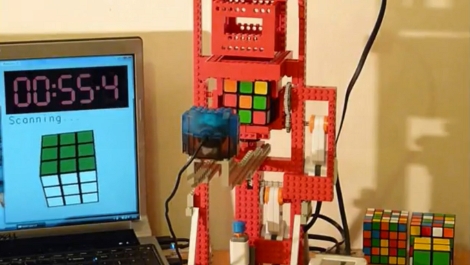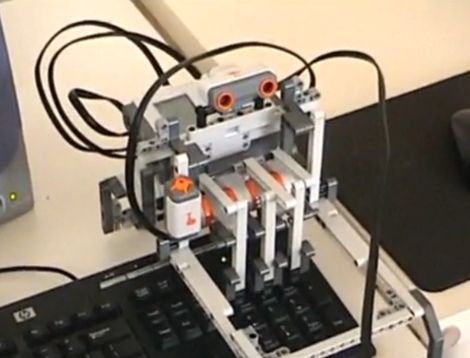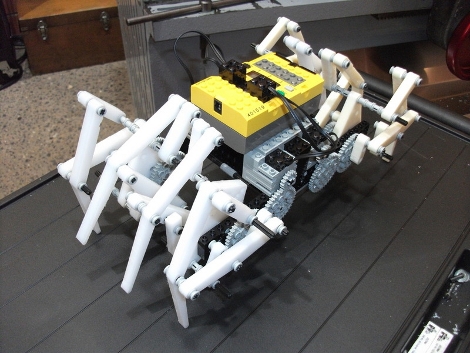[youtube=http://www.youtube.com/watch?v=eaRcWB3jwMo]
CubeStormer solves Rubik’s cubes and it does it quickly! Made entirely out of LEGO, a Mindstorm web camera is used to scan in the cube with four mechanical hands for manipulation. The device is capable of solving a random cube in less than 11 seconds. That’s quite a bit faster than the last Minstorm solver we saw, and the CuBear solver we are so fond of.
[Thanks Ferdinand]















